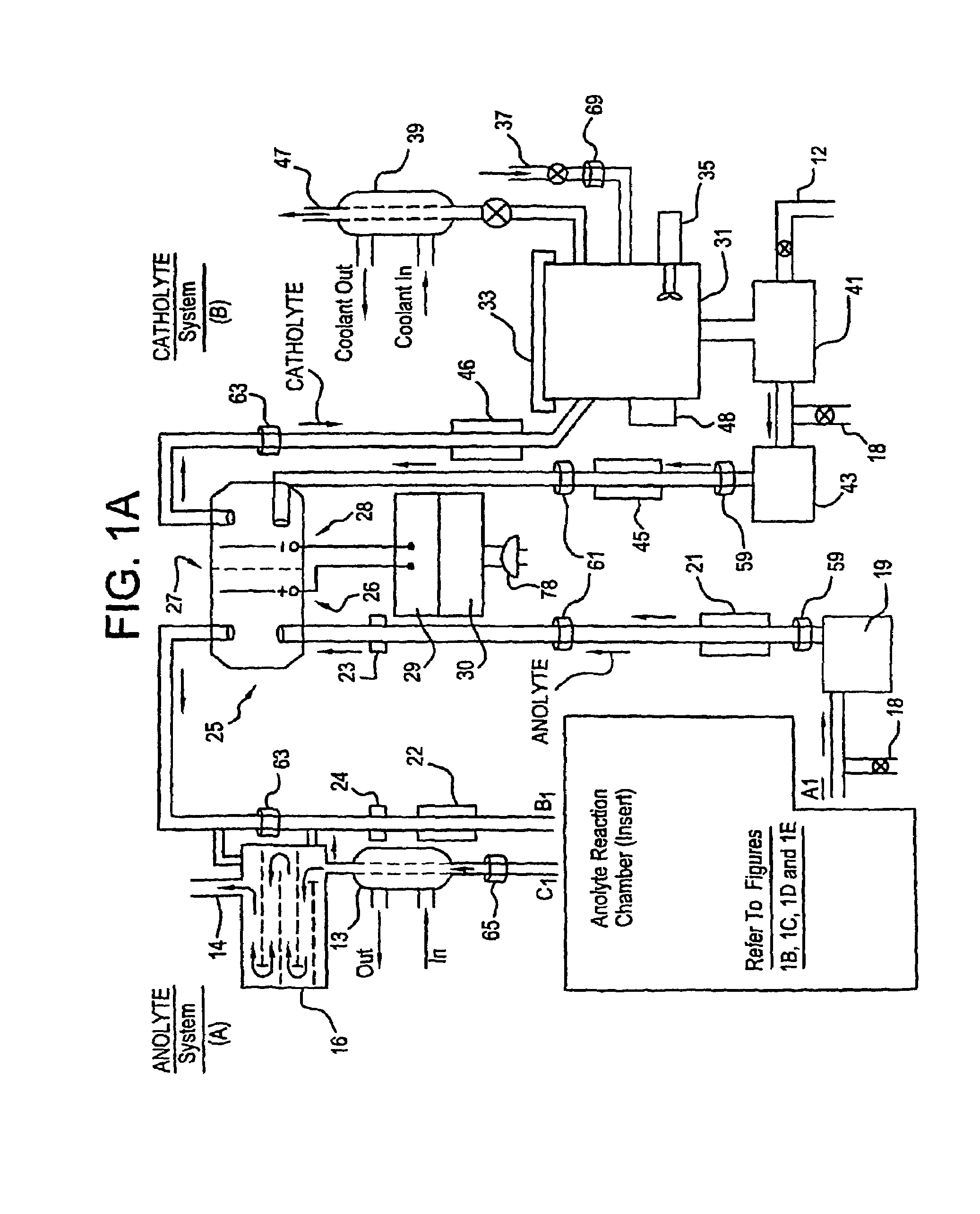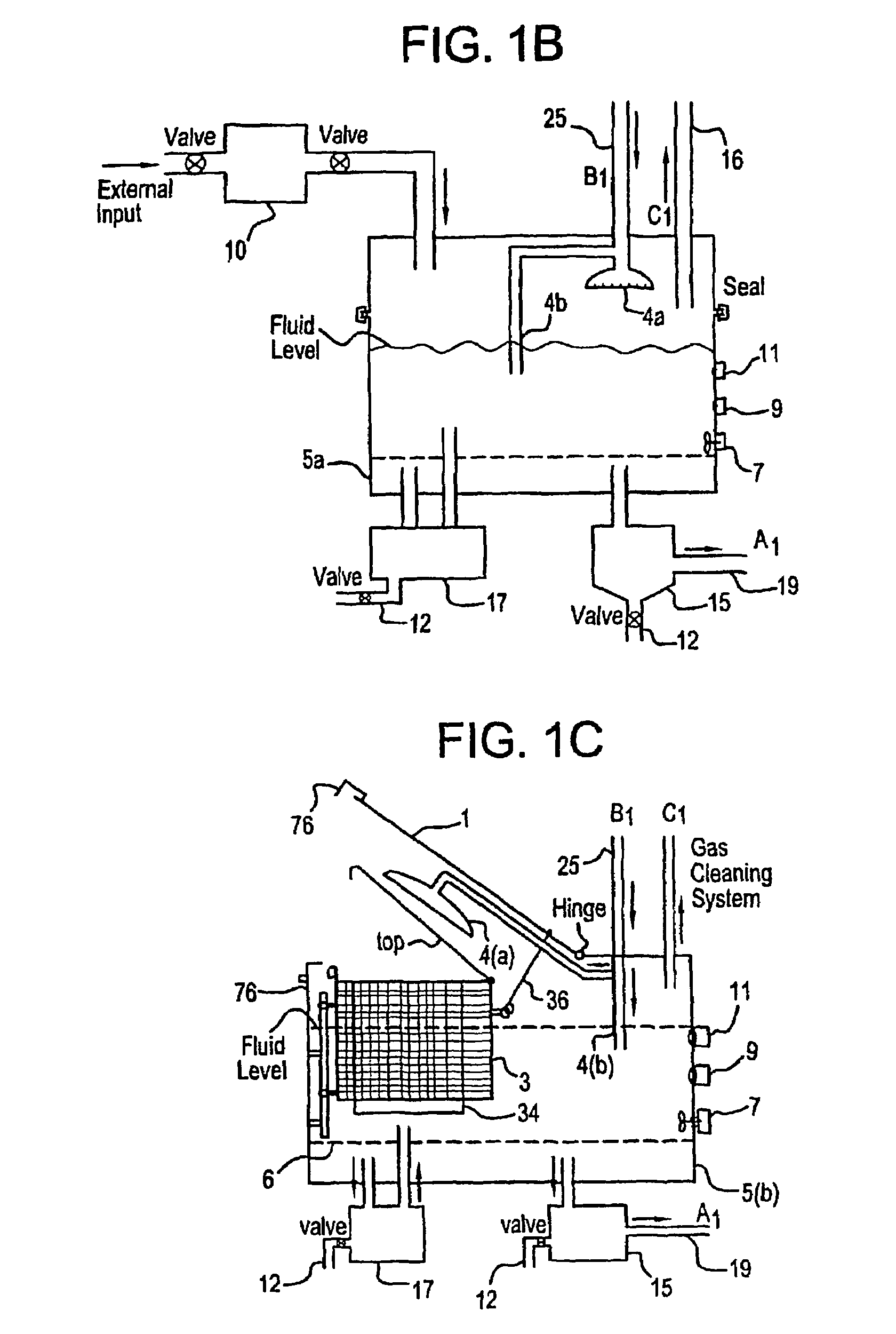Mediated electrochemical oxidation for decontamination
a technology of electrochemical oxidation and decontamination, which is applied in the direction of instruments, nuclear elements, greenhouse gas reduction, etc., can solve the problems of reducing the decontamination rate of mixed waste, and increasing the burden of mixed waste disposal, etc., to achieve enhanced decontamination rate, improved access to oxidizers, and energy saving
- Summary
- Abstract
- Description
- Claims
- Application Information
AI Technical Summary
Benefits of technology
Problems solved by technology
Method used
Image
Examples
examples
[0186]The following examples illustrate the application of the process and the apparatus.
Example (1)
Destruction of Mixed Waste Surrogates
[0187]The following surrogates have been destroyed in the MEO System Apparatus: tungsten carbide, manganese dioxide, etc. The destruction results were the oxidizing of the surrogates into solution.
Example (2)
Efficient and Environmentally Safe Products
[0188]The MEO process produces oxidized the mixed waste into CO2, water, and trace inorganic salts all of which are considered benign for introduction into the environment by regulatory agencies. The transuranic / actinides ions produced by the MEO process are removed from the anolyte solution by either a precipitation or filtering process. The cost of using the MEO process in this invention is competitive with both the existing methodologies (silver II, cobalt III, cerium IV and peroxysulfate). The MEO process is uniquely suited for destruction of mixed waste because water is actually a source of second...
example
(4)
System By-Products are Safe
[0190]The system flexibility provides for the introduction of more then one mediator ion resulting in marked improvement in the efficiency of the electrolyte. Furthermore, the wide choice of mediators listed in Table I or available as POMs, and electrolytes in this patent, desensitizes the system to the formation of participates in solution (i.e. allows increased ease in preventing formation of unstable oxy compounds).
[0191]While the invention has been described with reference to specific embodiments, modifications and variations of the invention may be constructed without departing from the scope of the invention, which is defined in the following characteristics and features.
[0192]The invention provides the following new characteristics and features:[0193]1. A process for treating and oxidizing mixed waste and / or tranuranics / actinides materials comprising disposing an electrolyte in an electrochemical cell, separating the electrolyte into an anolyte p...
PUM
| Property | Measurement | Unit |
|---|---|---|
| pressure | aaaaa | aaaaa |
| volume | aaaaa | aaaaa |
| temperature | aaaaa | aaaaa |
Abstract
Description
Claims
Application Information
 Login to View More
Login to View More - R&D
- Intellectual Property
- Life Sciences
- Materials
- Tech Scout
- Unparalleled Data Quality
- Higher Quality Content
- 60% Fewer Hallucinations
Browse by: Latest US Patents, China's latest patents, Technical Efficacy Thesaurus, Application Domain, Technology Topic, Popular Technical Reports.
© 2025 PatSnap. All rights reserved.Legal|Privacy policy|Modern Slavery Act Transparency Statement|Sitemap|About US| Contact US: help@patsnap.com



